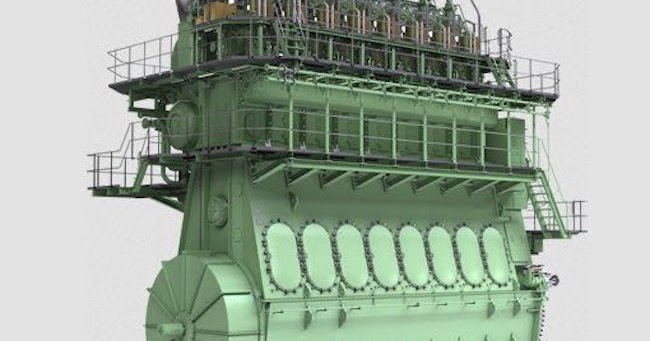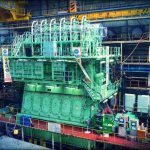Engine performance is an indication of the degree of success of the engine performs its assigned task, i.e. the conversion of the chemical energy contained in the fuel into the useful mechanical work.
The performance of an engine is evaluated on the basis of the following : (a) Specific Fuel Consumption. (b) Brake Mean Effective Pressure. I Specific Power Output. (d) Specific Weight. (e) Exhaust Smoke and Other Emissions. The particular application of the engine decides the relative importance of these performance parameters. For Example : For an aircraft engine specific weight is more important whereas for an industrial engine specific fuel consumption is more important.
For the evaluation of an engine performance few more parameters are chosen and the effect of various operating conditions, design concepts and modifications on these parameters are studied. The basic performance parameters are the following : (a) Power and Mechanical Efficiency. (b) Mean Effective Pressure and Torque. I Specific Output.
(d) Volumetric Efficiency. (e) Fuel-air Ratio. (f) Specific Fuel Consumption. (g) Thermal Efficiency and Heat Balance. (h) Exhaust Smoke and Other Emissions. (i) Specific Weight. Power and Mechanical Efficiency The main purpose of running an engine is to obtain mechanical power. • Power is defined as the rate of doing work and is equal to the product of force and linear velocity or the product of torque and angular velocity. • Thus, the measurement of power involves the measurement of force (or torque) as well as speed. The force or torque is measured with the help of a dynamometer and the speed by a tachometer. The power developed by an engine and measured at the output shaft is called the brake power (bp) and is given by bp=2Πnt/60 where, T is torque in N-m and N is the rotational speed in revolutions per minute.
The total power developed by combustion of fuel in the combustion chamber is, however, more than the bp and is called indicated power (ip). Of the power developed by the engine, i.e. ip, some power is consumed in overcoming the friction between moving parts, some in the process of inducting the air and removing the products of combustion from the engine combustion chamber.
Indicated Power: It is the power developed in the cylinder and thus, forms the basis of evaluation of combustion efficiency or the heat release in the cylinder. Where, I.P= PmLANK/60 pm = Mean effective pressure, N/m2, L = Length of the stroke, m, A
= Area of the piston, m2, N
= Rotational speed of the engine, rpm (It is N/2 for four stroke engine), and k = Number of cylinders. Thus, we see that for a given engine the power output can be measured in terms of mean effective pressure. The difference between the ip and bp is the indication of the power lost
in the mechanical components of the engine (due to friction) and forms the basis of mechanical efficiency; which is defined as follows : Mechanical efficiency=bp/ip The difference between ip and bp is called friction power (fp). Fp = ip − bp Mechanical efficiency= b.p/(bp+fp)
Mean Effective Pressure and Torque: Mean effective pressure is defined as a hypothetical/average pressure which is assumed to be acting on the piston throughout the power stroke. Therefore, Pm=60Xi.P/LANk where, Pm = Mean effective pressure, N/m2, Ip = Indicated power, Watt, L = Length of the stroke, m, A = Area of the piston, m2, N = Rotational speed of the engine, rpm (It is N/2 for four stroke engine), and k = Number of cylinders. If the mean effective pressure is based on bp it is called the brake mean effective pressure( Pm), and if based on ihp it is called indicated mean effective pressure (imep). Similarly, the friction mean effective pressure (fmep) can be defined as, fmep = imep – bmep. The torque is related to mean effective pressure by the relation B.P=2Πnt/60 I.P=PmLANk/60
Thus, the torque and the mean effective pressure are related by the engine size. A large engine produces more torque for the same mean effective pressure. For this reason, torque is not the measure of the ability of an engine to utilize its displacement for producing power from fuel. It is the mean effective pressure which gives an indication of engine displacement utilization for this conversion. Higher the mean effective pressure, higher will be the power developed by the engine for a given displacement. Again we see that the power of an engine is dependent on its size and speed.
Therefore, it is not possible to compare engines on the basis of either power or torque. Mean effective pressure is the true indication of the relative performance of different engines.
Specific Output: Specific output of an engine is defined as the brake power (output) per unit of piston displacement and is given by, Specific output=B.P/A.L Constant = bmep × rpm • The specific output consists of two elements – the bmep (force) available to work and the speed with
which it is working. Therefore, for the same piston displacement and bmep an engine operating at higher speed will give more output. It is clear that the output of an engine can be increased by increasing either speed or bmep. Increasing speed involves increase in the mechanical stress of various engine parts whereas increasing bmep requires better heat release and more load on engine cylinder.
Volumetric Efficiency: Volumetric efficiency of an engine is an indication of the measure of the degree to which the engine fills its swept volume. It is defined as the ratio of the mass of air inducted into the engine cylinder during the suction stroke to the mass of the air corresponding to the swept volume of the engine at atmospheric pressure and temperature. Alternatively, it can be defined as the ratio of the actual volume inhaled during suction stroke measured at intake conditions to the swept volume of the piston. Volumetric efficiency, hv = Mass of charge actually sucked in Mass of charge corresponding to the cylinder intake The amount of air taken inside the cylinder is dependent on the volumetric efficiency of an engine and hence puts a limit on the amount of fuel which can be efficiently burned and the power output. For supercharged engine the volumetric efficiency has no meaning as it comes out to be more than unity.
Fuel-Air Ratio (F/A): Fuel-air ratio (F/A) is the ratio of the mass of fuel to the mass of air in the fuel-air mixture. Air-fuel ratio (A/F) is reciprocal of fuel-air ratio. Fuel-air ratio of the mixture affects the combustion phenomenon in that it determines the flame propagation velocity, the heat release in the combustion chamber, the maximum temperature and the completeness of combustion. Relative fuel-air ratio is defined as the ratio of the actual fuel-air ratio to that of the stoichiometric fuel- air ratio required to burn the fuel supplied. Stoichiometric fuel-air ratio is the ratio of fuel to air is one in which case fuel is completely burned due to minimum quantity of air supplied. Relative fuel-air ratio,
=(Actual Fuel- Air ratio)/(Stoichiometric fuel-Air ratio)
Brake Specific Fuel Consumption: Specific fuel consumption is defined as the amount of fuel consumed for each unit of brake power developed per hour. It is a clear indication of the efficiency with which the engine develops power from fuel. B.S.F.C= Relative fuel-air ratio,
=(Actual Fuel- Air ratio)/(Stoichiometric fuel-Air ratio) This parameter is widely used to compare the performance of different engines.
Thermal Efficiency and Heat Balance: Thermal efficiency of an engine is defined as the ratio of the output to that of the chemical energy input in the form of fuel supply. It may be based on brake or indicated output. It is the true indication of the efficiency with which the chemical energy of fuel (input) is converted into mechanical work.
Thermal efficiency also accounts for combustion efficiency, i.e., for the fact that whole of the chemical energy of the fuel is not converted into heat energy during combustion. Brake thermal efficiency = B.P/mf* Cv where, Cv = Calorific value of fuel, Kj/kg, and mf = Mass of fuel supplied, kg/sec. • The energy input to the engine goes out in various forms – a part is in the form of brake output, a part into exhaust, and the rest is taken by cooling water and the lubricating oil. • The break-up of the total energy input into these different parts is called the heat balance. • The main components in a heat balance are brake output, coolant losses, heat going to exhaust, radiation and other losses. • Preparation of heat balance sheet gives us an idea about the amount of energy wasted in various parts and allows us to think of methods to reduce the losses so incurred.


